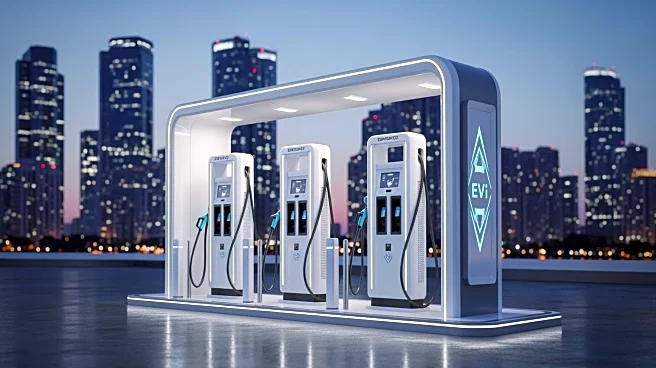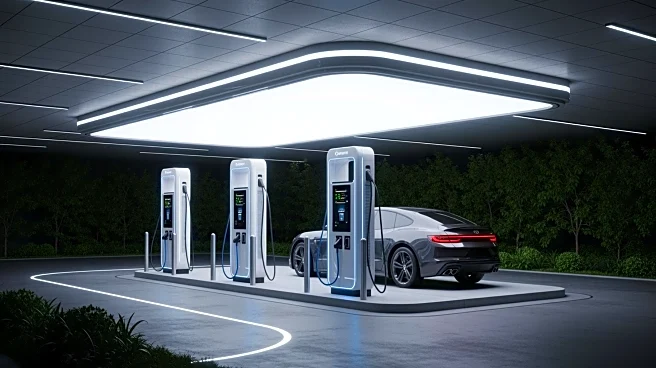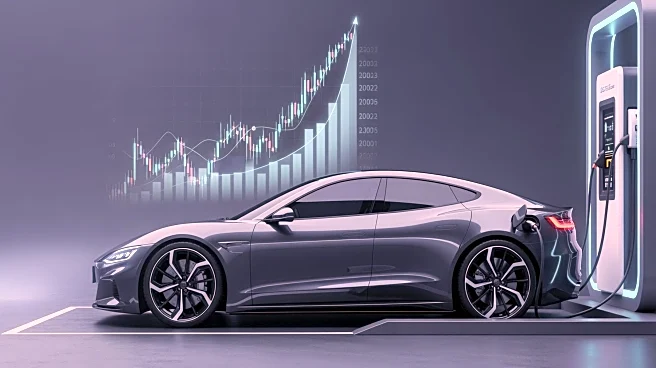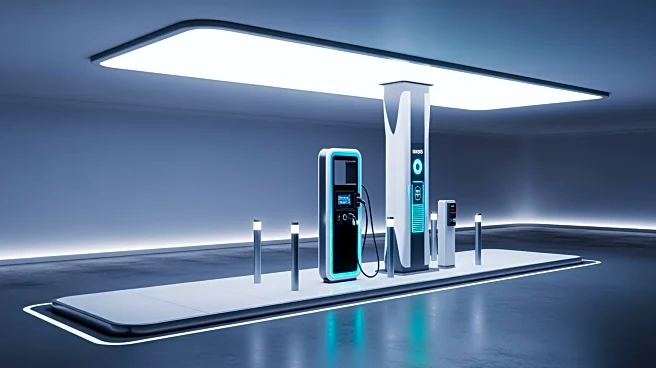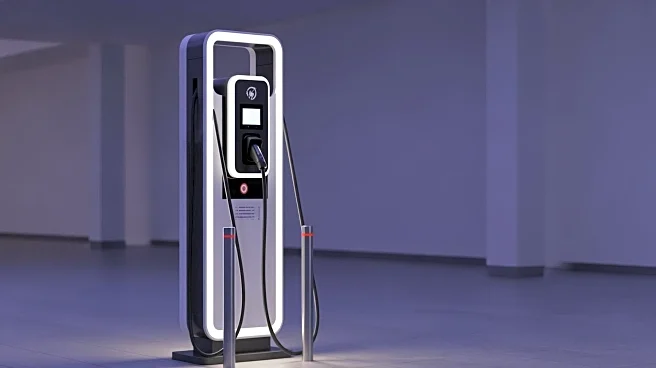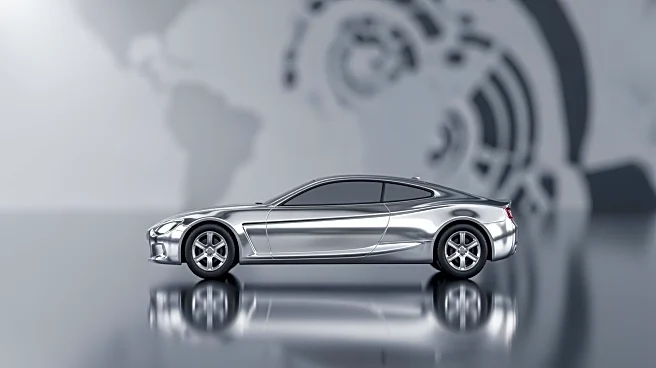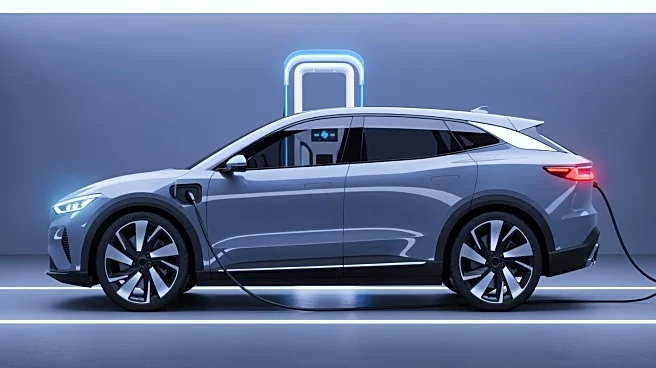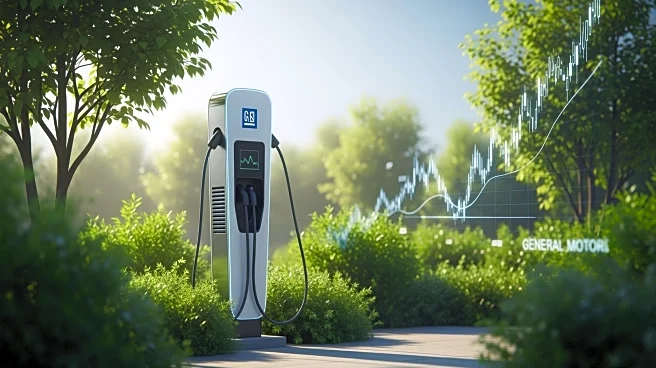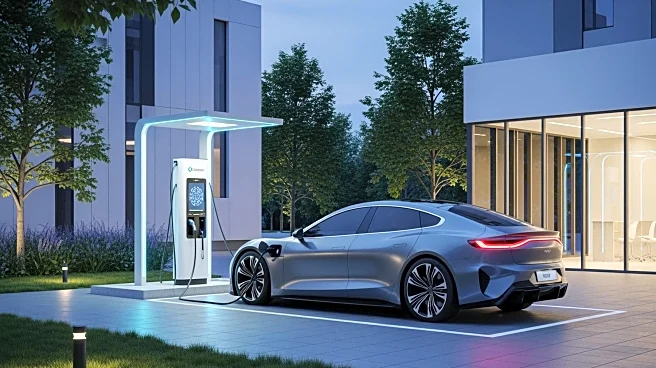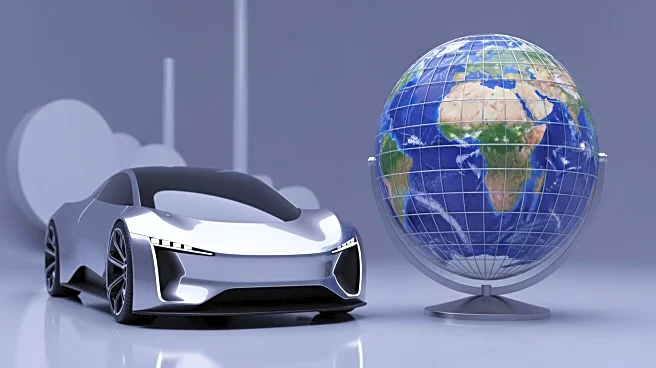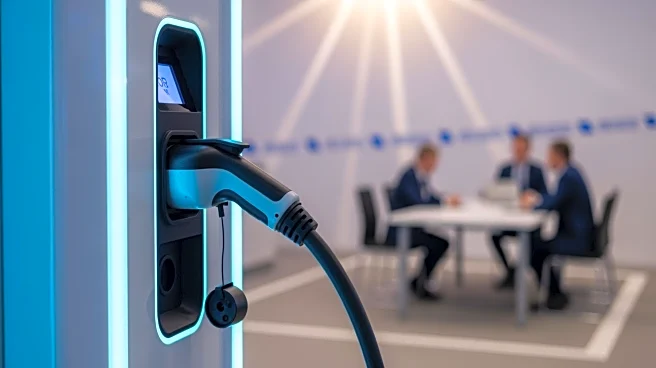What's Happening?
General Motors, led by CEO Mary Barra, is adjusting its electric vehicle strategy due to market challenges and regulatory changes. Despite a $1.6 billion charge in the third quarter related to slowing
EV adoption, GM remains committed to EVs as a long-term focus. The company plans to reduce overcapacity and losses by 2026, while continuing to produce models like the Chevrolet Equinox and Cadillac Escalade IQ. The commercial electric van market has been slower than expected, prompting GM to end production of the BrightDrop electric delivery van. CFO Paul Jacobson highlighted the need to lower costs and improve battery technology as part of GM's strategy.
Why It's Important?
This strategic shift by GM reflects broader challenges in the EV market, including the expiration of consumer tax credits and regulatory changes. The company's decision to reduce EV capacity and focus on cost efficiency could impact the U.S. auto industry, particularly in terms of manufacturing jobs and supply chain dynamics. GM's actions may influence other automakers facing similar market pressures, potentially affecting the pace of EV adoption and innovation. The company's commitment to EVs as a 'North Star' suggests a long-term vision despite short-term setbacks.
What's Next?
GM plans to address overcapacity and reduce EV losses by 2026, positioning itself for stabilized demand. The company will focus on structural improvements to battery cells and architecture, aiming to lower costs and enhance profitability. As GM navigates these challenges, stakeholders such as investors, suppliers, and employees will be closely monitoring the company's progress and strategic decisions. The broader auto industry may also react to GM's approach, potentially leading to shifts in market strategies and regulatory advocacy.
